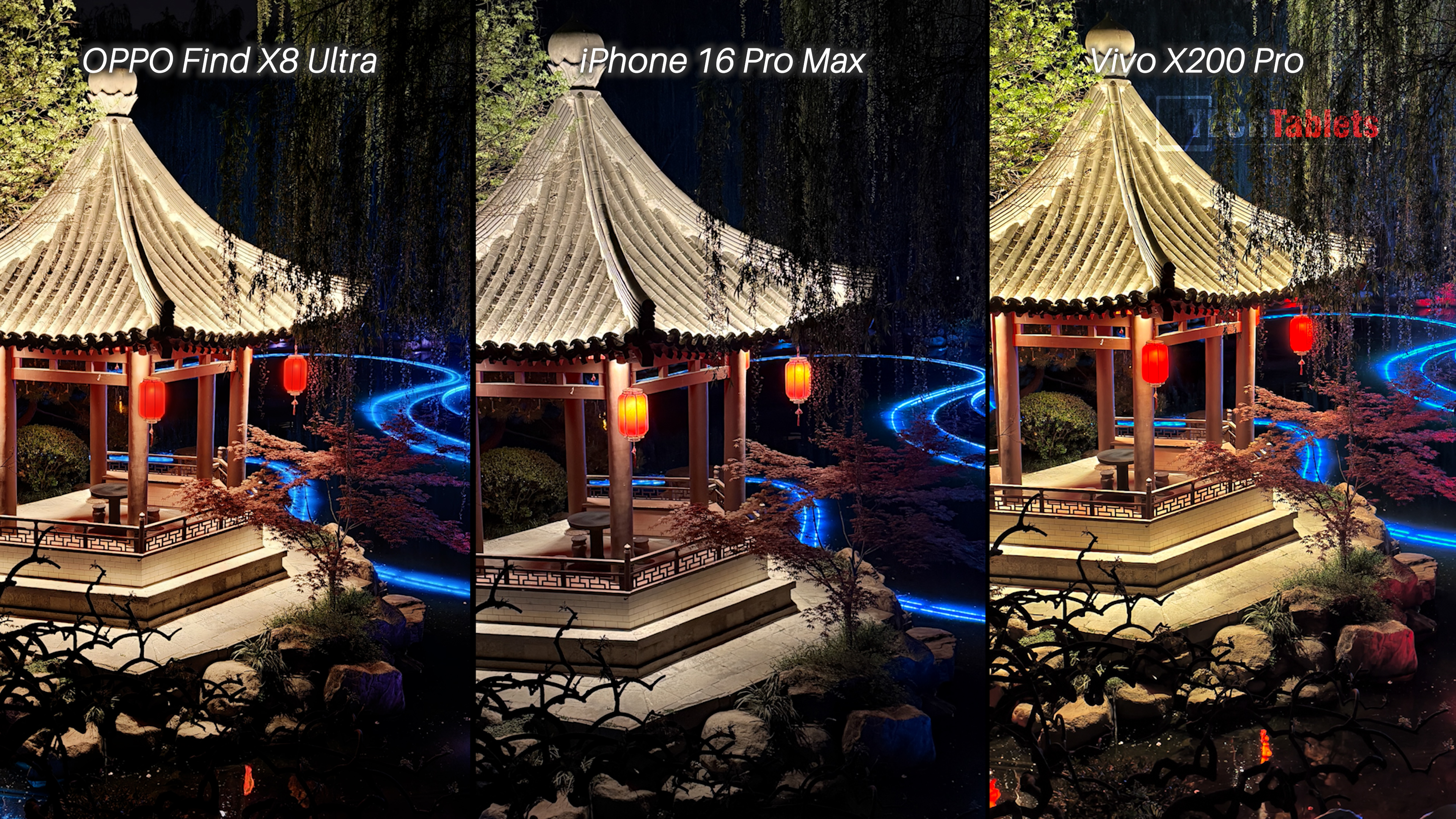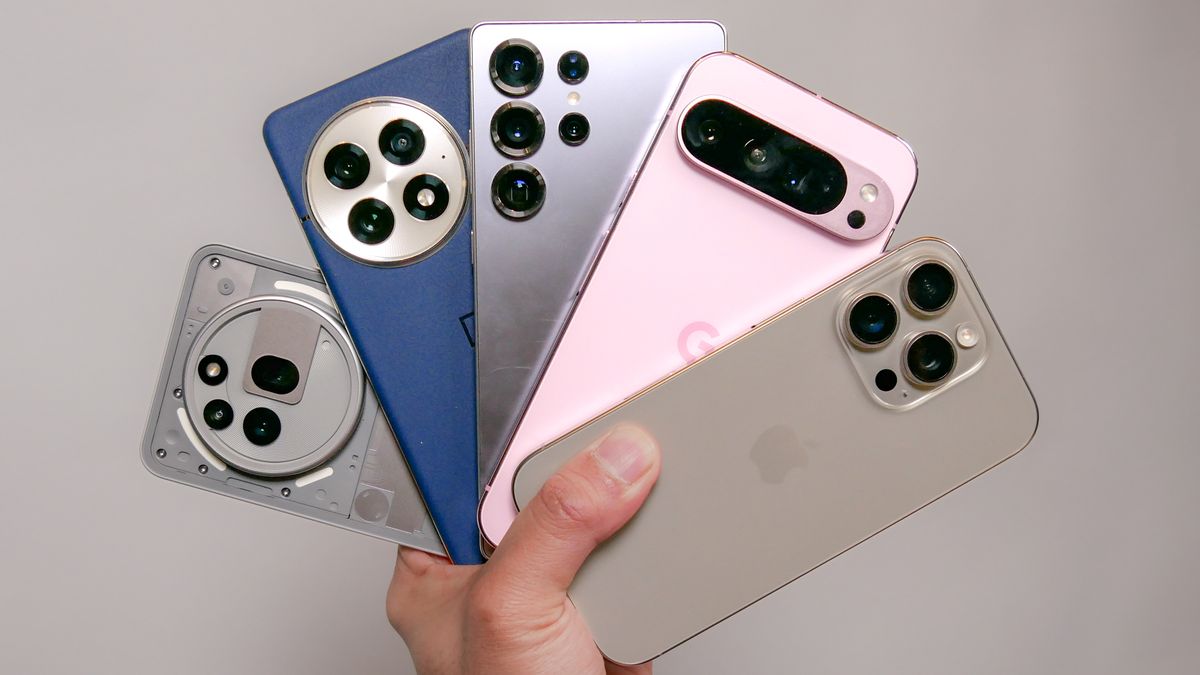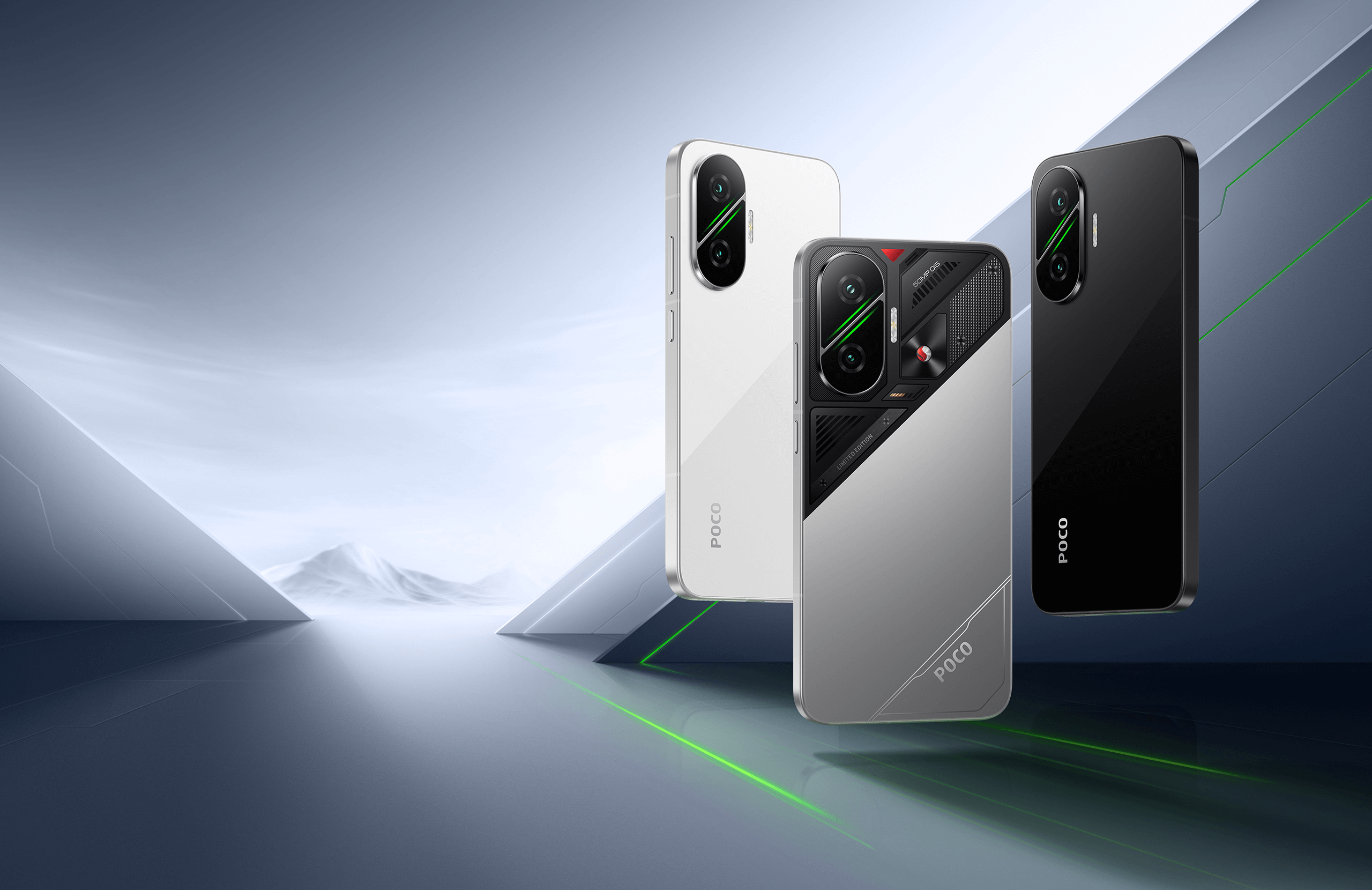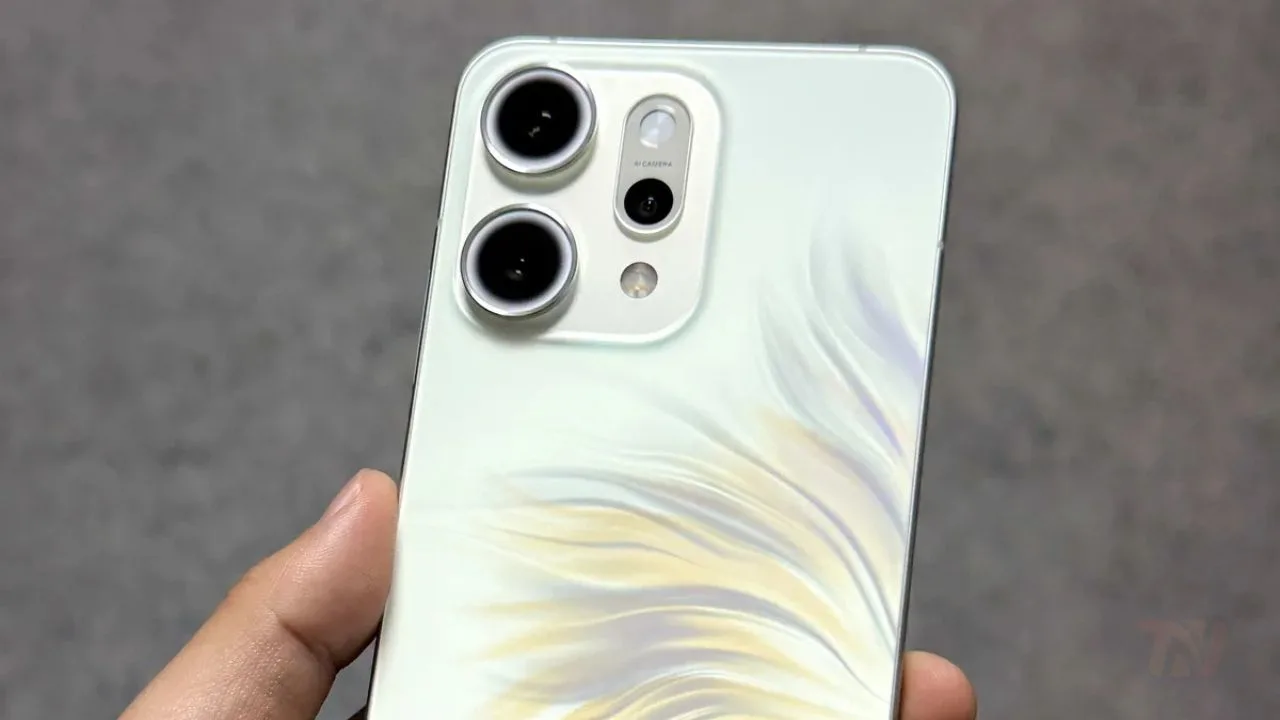Vivo X200 Ultra vs iPhone 16 Pro Max Comparison
Introduction
Today I’m really excited because I finally have the Vivo X200 Ultra with me, which is arguably the best camera smartphone in the world. Why do I say that? Because Vivo has cleverly used a combination of hardware and software to produce results that look very impressive. But the question really is, is it actually more impressive than the Oppo Find X8 Ultra and the iPhone 16 Pro Max? A phone that Vivo themselves compared at the launch event.
Camera Setup

I must talk about the Vivo X200 Ultra’s camera setup first. It uses the same Sony 818 sensor, the 50MP sensor that was used even in the X200 Pro. But vivo has made this very important change where it has switched out the 23mm 24mm standard wide lens that you get on most phones for a 35 mm lens. Plus, there’s gimbal OS stabilization on top of it.
Trust me, this is every camera man’s dream come true. Because the number of times I’ve heard people tell me, “Oh, why don’t smartphone manufacturers use 35 mm lenses?” Well, Vivo has done it.
Vivo has also used the same Sony 818 sensor for the ultra-wide-angle camera with which Vivo actually does a 2x in sensor crop to get a 28 mm lens so that you don’t miss out on that wide frame either. There’s also that 200-megapixel Samsung HP9 sensor with 85mm attached lens.
Zoom Lens and Sensor Comparison

Here’s some interesting math for you. With the X200 Pro, you get the same sensor for the telephoto camera or the periscope camera. And attached to that periscope camera is also an 85 mm lens. But when you do the calculation with the primary camera, which is a 23 mm lens camera on the Vivo X200 Pro, you actually get a magnification of 3.7x. At the same time, when you look at the X200 Ultra, it’s a magnification of 2.5x.
That’s not it. You also get a 50MP selfie camera. There’s a dedicated camera control button obviously. And there are two dedicated chips like apart from the Snapdragon 8 Elite that’s inside and the ISP that it uses specifically for imaging which is basically the VS1 chip and the V3 Plus chip. The VS1 chip will be used for raw data processing and the V3 Plus will be used for algorithm tuning.

Additional Lens Accessories
This is a completely mad mad mad setup. And when you add that camera kit and that teleprompter lens, that Zeiss made lens, which increases the magnification to 8.7x, it’s insane.
Primary Camera Comparison
let’s just jump to the pictures. Now to start off, we’ll look at the photos taken by the primary camera on all the three phones at their default focal length. So the iPhone has a 24mm and Oppo has 23 mm and vivo has 35 mm. And Vivo’s 35 mm lens actually works wonders because you get excellent detail retention at 100% crop despite having a smaller sensor than Oppo’s 1 in sensor. Vivo has a 1x 1.28 in sensor.
And when you compare the 24 megapixel outputs of Oppo and iPhone, which is basically what both these phones can do, OPPO actually offers more details and sharper textures thanks to the larger sensor. Now, when you switch to the 35 mm on iPhone and Oppo, they’re not nearly as good as Vivo. And between the OPPO and iPhone, actually, the iPhone is better here. Vivo would be number one when it comes to detail retention for me, followed by Oppo and then Apple.
Low Light Performance
Now switching to low light. All the three are fantastic here. But iPhone’s color edition is spoton. Whether it’s the greens or the night sky, they look accurate here. But when it comes to detail retention at 100% crop, both the Findex 8 Ultra and the Vivo X200 Pro are kind of . iPhones is the softest and weakest here.

So with that 1x 1.28 in sensor on the X200 Ultra along with the 35 mm lens that it’s using, the kind of details that you are getting is actually something that I didn’t expect. It could also be because it’s got those dedicated chips for processing as well.
Whatever it is, Vivo is doing a fantastic job. And when you look at the ultra low light scenes like this one, Vivo just decimates the competition here. The noise correction and detail detention is topnotch. Oppo struggles generally in such scenes. Uh and in comparison, iPhone is actually not bad, but it’s a little too noisy. So overall, when you look at it, we was the best even for low light and Apple and Oppo would be matched here.
Ultra-Wide Angle Shots
Now time to talk about those ultra wideangle shots because there are some interesting things to note here as well. Firstly, the iPhone is the worst of the lot. Unlike the primary camera, you do not get 24 megapixel outputs from the ultra wideangle camera on the iPhone, unfortunately. But Oppo gives you proper 24 megapixel outputs from the ultra wide as well. And this means that the detail retention at 100% crop is insane.
when you match the crop on Oppo and Vivo, despite Vivo having a large sensor, OPPO is actually better here because Vivo’s algorithm oversharpens the ultra wide pictures a lot and that is clearly visible from the micro details. Having said that, that new ultra wide angle sensor on the X200 Ultra is absolutely kick-ass in low light ultra wide shots. It pulls in the most amount of details obviously and the second best is OPPO here.
Zoom Lens Comparison
Now time to compare the zoom shots using the periscope and the telephoto cameras on these phones basically. But I’m going to switch things around a little bit. What I’m going to do is actually going to compare the focal length equivalent to a full frame just to maintain my sanity. And I’ll tell you why. Because if I were to do a 2x, 3x, 5x, 10x, 30x comparison, then it would have been difficult for me to explain and for you to understand.
Because for example, the 2X on the iPhone is 48 mm and the 2X on the OPPO is 46 mm, which is comparable, but the 2X on the Vivo is 70 mm. So, you see the kind of problem that’s there. Please like, share, and subscribe for the amount of effort that I’ve put into the math of doing this.
Zoom Performance by Focal Length

starting off with the 70 mm comparison, Oppo leads the pack once again because of the fact that it actually has 24 megapixel outputs. You get the most amount of details with the Finde x8 Ultra and the 2x in sensor crop which goes to about 70 mm on the X200 Ultra is the second best here and then it’s followed by the iPhone which is the worst of the three.
At 85 mm, Vivo’s dedicated 200 megapixel Samsung HP9 sensor is the most detailed followed by Oppo and then the iPhone. At 120 mm or 5x on the iPhone, I expected the iPhone to have an easy victory because of the dedicated lens. But well, Vivo beats in fair and square thanks to that AI sharpening that it’s doing. In fact, it even beats the OPPO here.
Next, we move on to 135 mm or the 6x dedicated lens on Oppo. Here, I realized Vivo’s flaw with the AI upscaling of the image. The sharpening is a little overdone and Oppo looks more realistic here. But still, even Vivo’s photo will look very, very good to an untrained eye. So, basically, both are almost equally good.
Extreme Zoom and Processing
Now, next, let’s take a look at the 668 mm range. At these long zoom ranges, the AI starts going into overdrive on the Oppo and Vivo. It looks overprocessed from the get-go, but the processing offers better sharpening on Oppo since it doesn’t haze out the details like Vivo does. Obviously, the iPhone is no match here, so I’m not even talking about it. But the digital zoom kind of looks natural here.
Now, at even further zoom ranges, like for example, the 1335 mm that you see over here, I don’t know. It’s right now boiling down to what kind of AI processing you prefer. You prefer Vivos processing or OPOS processing here. Both actually don’t recreate the scene very authentically. I feel like Xiaomi 15 Ultra actually does a better job.
Low Light Zoom

All right, now moving on to low light zoom. At 70 mm, Oppo is the best, followed by Vivo and then iPhone. At 85 mm, while Vivo does have an edge here, Oppo is nearly as good. I’d say 99% there and that is a huge win for low light zoom on the Findex 8 Ultra. At 120 mm, Vivo takes a win again, followed by Oppo and then Apple. At 135 mm, Oppo 6X comes in clutch and it takes a win once again.
In my opinion, after looking at the photos, I’d probably go with Oppo here for zoom performance. Vivo following it very closely in second position and iPhone like somewhere there. Now, obviously, I haven’t tested the teleconverter zoom lens that you can attach to the Vivo X200 Ultra. If you were to do that, then you will definitely get way better zoom pictures with the X200 Ultra. I’d love to do that sometime.
HDR Performance
Moving on to HDR processing. I felt like Vivo’s multistack processing is superior. While all three look good at first glance, only when you look at the 100% crop do the cracks start developing. Especially with the iPhone, you can see that it tends to blow out the brightest portions in the image. And when there’s a tree in the front with the harsh backlighting, you can notice some chromatic aberration as well. I saw some purple fringing.
Oppo is almost as good as Vivo except for the shadow region where Vivo pulls out more details. And the same analysis is true for HDR samples that I captured with the ultra wideangle camera as you can see for yourself. And when you’re capturing people against harsh backlight, the iPhone just falters really badly.
Motorola Razr 60 Ultra: Best Flip Phone of 2025
Color Reproduction
Now, a lot of people will have a tendency to say that, hey, this is probably what it looks like. This is very natural looking. Actually, it’s not. What I saw was much better and it was very well reproduced by Vivo and Oppo. In fact, Vivo and Oppo’s HDR algorithm seems to be much better here with me preferring Vivo slightly better.
But the thing to note here is that Apple’s smart HDR algorithm at one point used to be one of the best in the industry. right now is lagging behind the Chinese counterparts when it comes to HDR multistack processing.
vivo X200 Pro – Full phone specifications
Skin Tones
Now talking about color reproduction, it is the closest to accurate or you know closest to neutral on Vivo with the Zeiss tuning. And truth be told, unless you peak intently, you can’t find the difference between the iPhone and Vivo. They look rather similar. The difference is that the iPhone is a touch warmer to make it look slightly more attractive, but yeah, very good color reproduction here.
The same is true for skin tones as well. By the way, Oppo messes it up entirely in the skin tone rendition. While Vivo is close to neutral, iPhone actually kind of wins here if you ask me.
Now, after using the Vivo X200 Ultra and testing it against these fantastic phones out here, I can safely say this without offending anyone that the Vivo X200 Ultra probably has to be the best camera smartphone in the world right now in 2025 at the moment.









